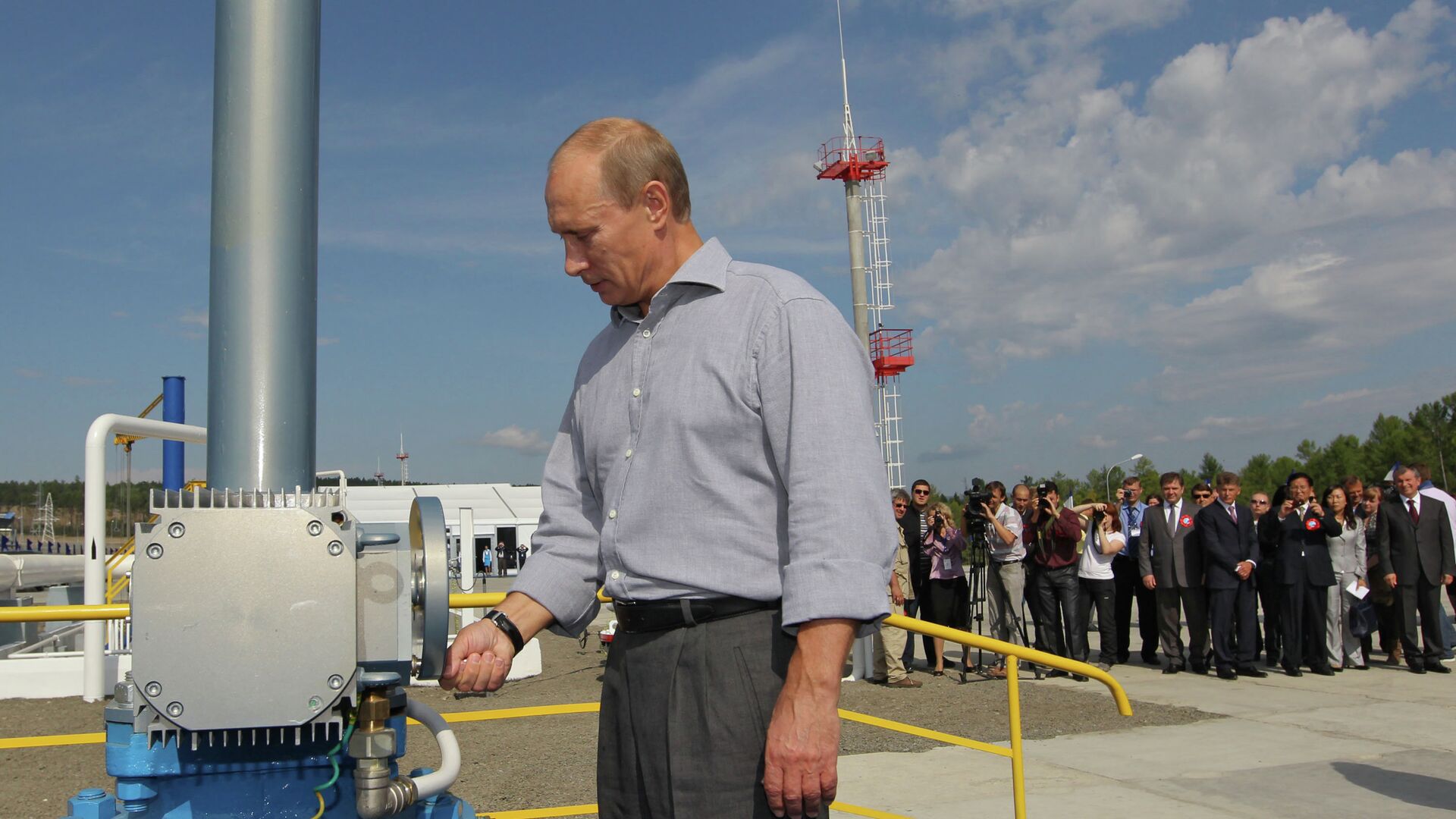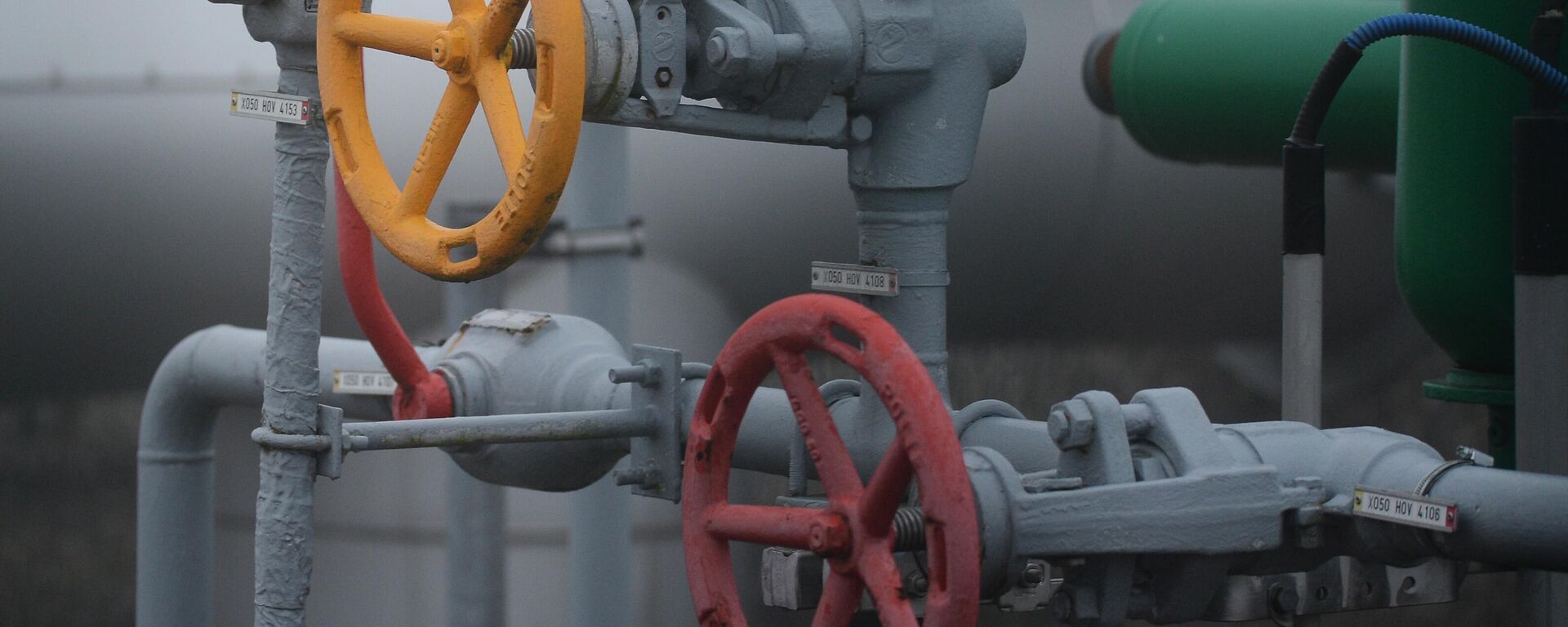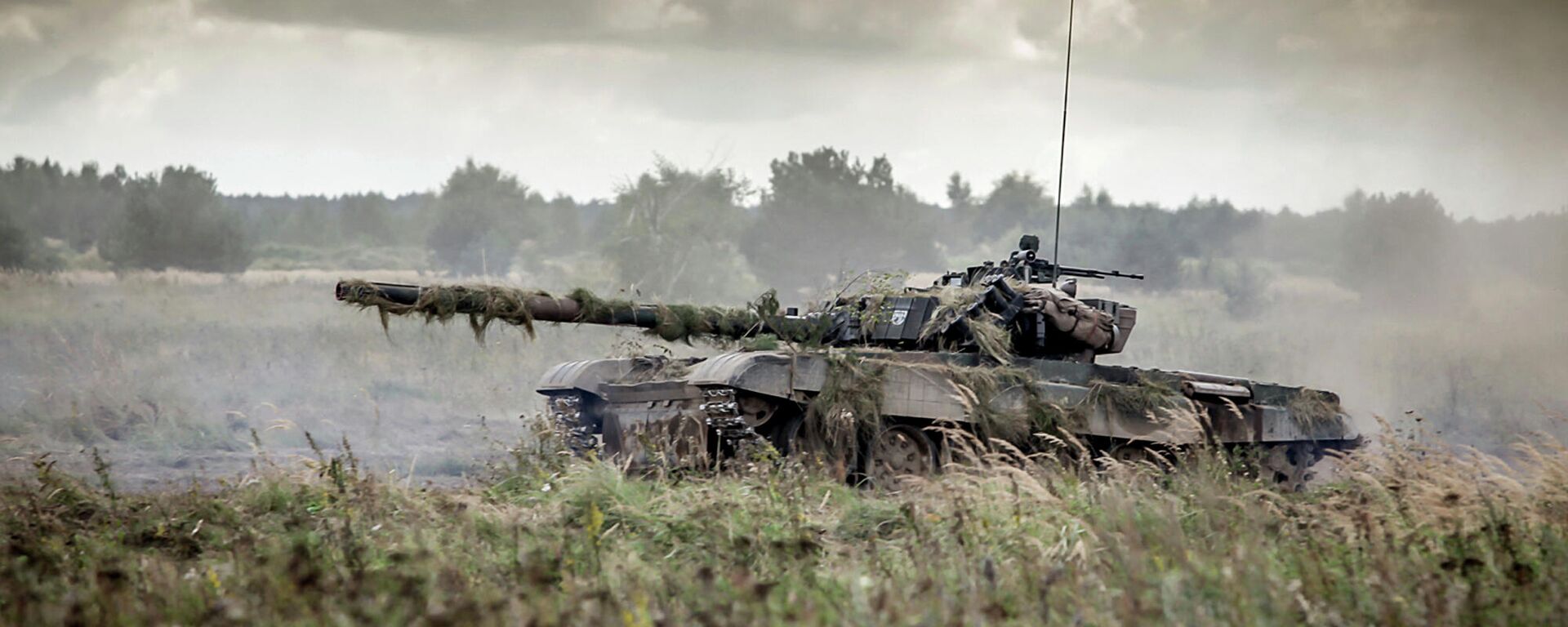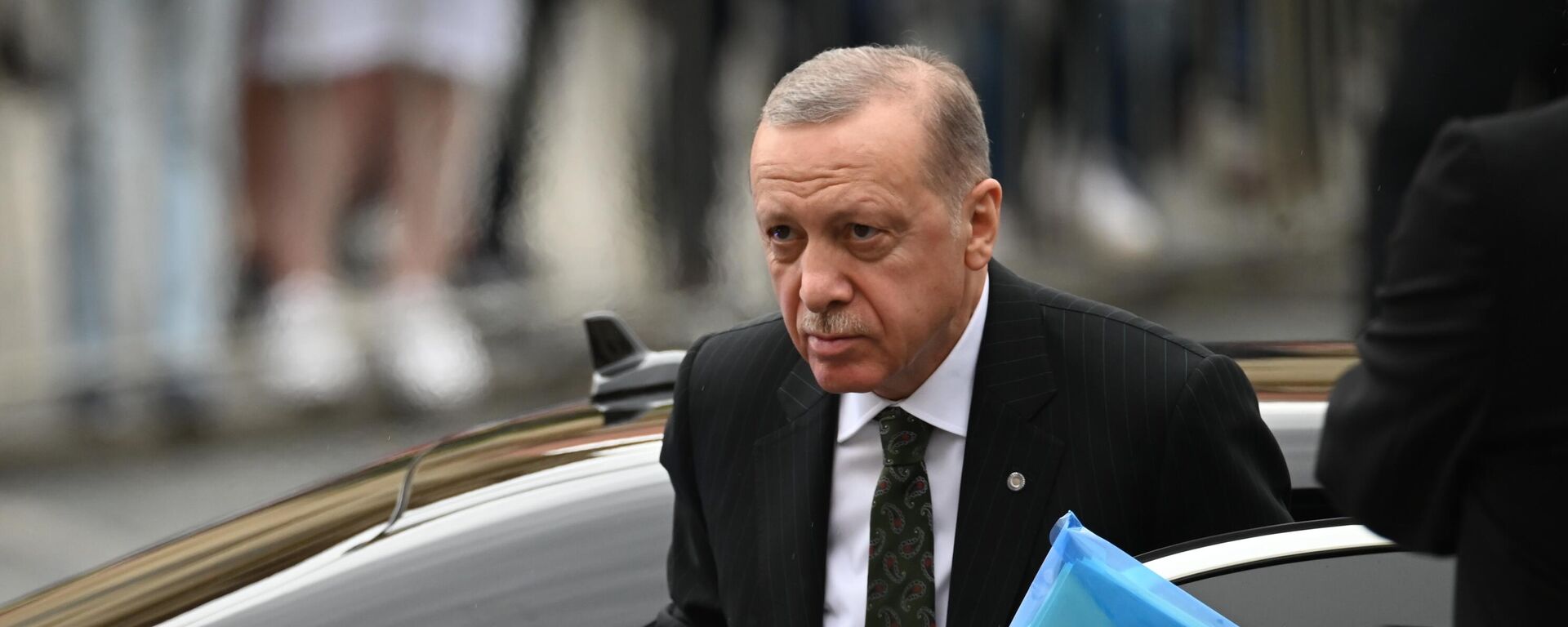Gaslighting, Defined: Did Germany Really Resort to Burning Coal Because Russia Starved It of Gas?
19:23 GMT 22.01.2023 (Updated: 18:49 GMT 23.01.2023)

© Sputnik / Alexei Druzhinin
/ Subscribe
Longread
Germany has blamed Russia for forcing it to resort to coal for heating and electricity in place of clean natural gas. Is there any truth behind this assertion? Sputnik investigates.
Vladimir Putin is personally to blame for Germany’s gas crisis, German Economy Minister Robert Habeck has announced.
“Half of Germany’s entire gas supply has been stopped because Putin turned off the gas tap and pipelines are now in disrepair. This means that in the foreseeable future, they will not be operational,” Habeck said, speaking to reporters against the backdrop of massive piles of coal at a liquefied natural gas (LNG) terminal in northwestern Germany on Friday.
“Right now we do not have half of the previous supply volumes. Three new LNG terminals will provide us with about a quarter of the old volume, or 55 billion cubic meters,” the minister said.
Germany’s three floating LNG terminals are capable of taking in and processing about 14 billion cubic meters of gas per year (bcm/yr), and Berlin hopes to increase its capacity to over 30 bcm/yr by the end of 2023, according to Habeck’s calculations.
Friday’s comments aren’t the first time the German economy minister has blamed Russia’s president for Germany’s gas woes.
Former Austrian deputy chancellor Heinz-Christian Strache says Berlin's turn to the ever-convenient Russian boogeyman has to do with its concern that the public will find out the real reasons behind energy shortages and high prices, which have nothing to do with Moscow.
"Russia wanted to and was prepared to continue gas deliveries to the EU and Germany. But Ukraine and Germany stopped further pipeline-based deliveries, while Nord Steam was destroyed, with the Russians not given access to the investigation," Strache told Sputnik in an interview. "Nord Stream 2 was blocked from exploitation at Germany's initiative," he added.
According to the former deputy chancellor, it's in the current German government's interest to hide the truth about the causes of the energy crisis, which could very well result in industry coming to a standstill, and consumers being left without electricity. Otherwise, "they would have to admit that they themselves are responsible" for the calamity, the politician noted.
Last June, Habeck suggested that Berlin was in “sort of an arm wrestling match” with Putin over energy, accusing Russia's president of trying to “create chaos” and “attack us” amid the decline of Russian gas deliveries via the Nord Stream 1 pipeline, which Gazprom attributed to delays in repair work of compressor stations thanks to Western sanctions.
In September, after the Nord Stream pipelines were damaged by sabotage, Habeck implied that Russia blew up its own infrastructure. Finally, in October, while criticizing Washington over the “astronomical” prices of American LNG, the minister nevertheless blamed Russia, not the US, for pushing Germany to the brink of recession. “We mustn’t let Putin win with this strategy of endangering our economic prosperity,” Habeck said.
Did ‘Putin’ Really Turn Off the Taps?
Obviously not, because Russia depends on gas exports for a substantial portion of its foreign export earnings, which make up a big chunk of the country's federal budget. Accordingly, as Putin and other Russian officials have repeatedly indicated, Moscow fulfills and will continue to fulfil its obligations on the supply of energy to its European partners.
Moreover, throughout 2022, Putin reiterated again and again that Russia would continue to fulfill all obligations to its European energy clients, including even to 'unfriendly states' which slapped sanctions on Moscow. However, the Russian president did have something to say about the economic consequences of suddenly rejecting Russian energy, warning last May that Brussels’ “absolutely political” decision to slash imports and introduce sanctions would constitute a form of economic suicide, and “irrevocably undermine the competitiveness of a significant part of European industry.”
These warnings became reality, and throughout the rest of 2022, German business leaders complained that the European economic powerhouse was at risk of deindustrialization and impoverishment, while French officials slammed Washington for trying to poach European producers through a “green” subsidies law known as the Inflation Reduction Act.
Problems With Russian Gas Deliveries to Europe
Before the escalation of the Ukrainian security crisis last February, Russia had five major pipelines shipping over 155 bcm/yr of natural gas to European Union members - about 37 percent of the EU's total consumption of 412 bcm in 2021. Germany alone relied on Russian pipeline gas for about 32 percent of its 142 bcm gas use in 2021.
Today, only two of Russia's pipelines remain operational, with one working well below capacity.
Five Russian Gas Pipelines and Their Fate
Yamal-Europe, the 4,100 km long pipeline built during the 1990s and fully commissioned in 2006, was the first to fall victim to the EU’s political games. In the spring of 2022, after refusing to pay for Russian gas in rubles (a condition Moscow enforced against countries which had sanctioned it to get exchange rate fluctuations under control), Polish authorities turned the 33 bcm/yr capacity pipeline on in reverse flow, stripping themselves, and Germany, of a major Russian gas supply route. Warsaw formally terminated its contract with Gazprom in May, claiming the company had proven an ‘unreliable partner’ and patting itself on the back for its “determination to become completely independent of Russian gas.” As a result, Polish state gas giant PGNiG raised internal gas rates by 45 percent, with energy costs contributing to inflation spiking to 17-18 percent, Poland's highest in decades.
Next, there’s Nord Stream, the massive, four-line pipeline network running from Russia to Germany along the bottom of the Baltic Sea. The network consists of Nord Stream 1 – commissioned between 2011-2012, and Nord Stream 2, whose construction was completed in 2021, but which never went online, first because of foot-dragging by German regulators, and then after being frozen by Berlin in February 2022 under crushing pressure from Washington. Nord Stream 1 and 2 have a combined gas throughput capacity of up to 110 bcm/year, enough to singlehandedly cover up to 75 percent of Germany’s gas needs, or turn the central European country into a major hub for deliveries further west and south.
Russian gas exports via Nord Stream 1 dropped to a trickle in the summer of 2022, and shut down in August after the last of its compressor station turbines was stopped for repairs. In September, Putin said that the pipeline had been shut down thanks to sanctions, which prevented a Siemens turbine undergoing maintenance in Canada from being shipped to Russia and installed.
“Give us a turbine and we’ll turn Nord Stream 1 on tomorrow. But they don’t give us anything, and say ‘see, they’re using energy as a weapon?’ What weapon? They themselves have engaged in a bunch of mischief and now don’t know what to do. They’ve put themselves in a so-called sanctions dead end,” Putin said at the time.
On September 26, Nord Stream 1 and 2 suffered a series of coordinated sabotage attacks off the island of Bornholm, Denmark. Western officials and media immediately accused Russia of blowing up its own infrastructure, and did not allow Moscow to access the sabotage site to carry out a forensic probe together with other regional countries.
After a month-long investigation, the Russian military pointed the finger at Britain’s Royal Navy for the act of terrorism. British authorities denied any involvement, accusing Moscow of “peddling false claims of an epic scale.” Swedish investigators carried out their own probe, confirming traces of sabotage but shying away from naming the culprits.
Next is TurkStream, the Trans-Baltic Sea pipeline that runs from southern Russia to Turkey’s continental European western portion. Capable of pumping up to 31.5 bcm/yr, TurkStream is the only major Russian gas pipeline delivering gas to Europe that hasn’t been affected by the highly politicized energy wars with the West. According to estimates published by Turkish media last week, the pipeline delivered 8.6 billion cubic meters of gas to Turkey, and 12.5 billion cubic meters to European countries, including Serbia and Hungary, in 2022.
Last fall, Russian and Turkish officials expressed interest in turning Turkey in to a major gas hub through which Russian energy, and possibly gas from countries like Algeria, Qatar and Azerbaijan, could be delivered to Europe.
Finally, there is the Soyuz, the oldest and smallest of the Russian gas pipelines directed toward Europe. Built during the Soviet period to deliver up to 26.1 bcm/yr of gas to Eastern Europe and what was then West Germany, part of this pipeline network runs through Ukraine.
Notwithstanding the Ukrainian security crisis, Soyuz continues to operate to this day. Since May of 2022, deliveries through the Ukrainian gas transmission system to Europe hovered between 40-43 million cubic meters per day (mcm/d), but dropped below 38, and then 24.4 mcm/d earlier this month. Soyuz is only partially operational, with Kiev closing down one of its two lines last spring after Russian and Lugansk People’s Republic forces liberated LPR territory with pipeline infrastructure on it from Ukrainian forces.
Today, the Soyuz and TurkStream are the only two major Russian pipelines being used to ensure that Gazprom can continue to meet its contractual obligations to European countries. Last month, the company reported that its gas exports to Europe would amount to roughly 90 billion cubic meters total in 2022, a 38 percent drop from the previous year. However, thanks to higher global energy prices, Russia's federal budget received $168.5 billion from fossil fuel revenues in 2022, compared to $131.6 billion a year earlier.
So Who's Really to Blame for Europe's Energy Crisis?
To sum up, Europe's energy crisis, and Germany's need to resort to burning dirty lignite coal for warmth and electricity, have nothing to do with Russia or Putin "turning off the gas tap," as Mr. Habeck claims, but are the result of Brussels' own efforts to 'wean' the bloc off and sanction the Russian energy sector, at Washington's behest. Successive US administrations spent years trying to torpedo Russian pipelines to Germany, and to push dramatically more expensive American LPG on the Europeans instead. Now, the Ukrainian crisis has finally given them the opportunity.
However, the American alternative to Russian gas is both expensive, and unsustainable in the long run, as many energy experts and even energy ministers attest. Last week, Qatari Energy Minister Saad al-Kaabi predicted that Russian gas would return to Europe in a big way within the decade to help stabilize the prices and satisfy the market.




